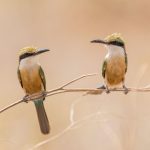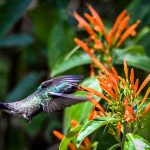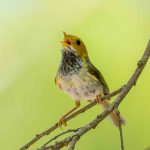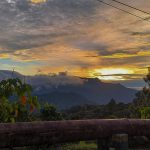The promise of spring migration lies in both potential and certitude. As we welcome back favorite fair-weather friends arriving with clockwork precision, we also hold out hope for the surprises that invariably come to the vigilant. Here are a few of my observations from a week of very limited bird watching:
- Cuckoos have always seemed exotic to me, probably because I spot them so rarely. I recently enjoyed by best looks ever at a sleek Yellow-billed Cuckoo. As it moved from branch to branch, presenting at all different angles, I had a chance to really look at the bird. Of course, the first marks to take in when a cuckoo appears are the tail and bill, the former to determine its genus (Coccyzus – the American cuckoos) and the latter to designate it species. But with more time, I could admire the bird’s plumage, noting a patch of rufous in its primaries that reminded me a lot of another lovely bird, Great-crested Flycatcher. Too bad I didn’t have a camera.
- I much prefer birding with a camera. I can’t help but regret all the epic shots I miss (cuckoo at arm’s length, Wood Duck drake in perfect light, etc.) when the camera is at home.
- A small group of Cliff Swallows moved in on my local Barn Swallow‘s territory, triggering a brief standoff at the edge of a dusty puddle. The two camps seem to have reached a truce. I never noticed Cliff Swallows here before, but that can probably be chalked up to the superficial similarities between the two species, despite their different genera. The colors are close enough, especially at the speed these birds usually move at, but the white forehead and flat tail of the Petrochelidon swallow clearly separates it from the Hirundo species’ forked tail and overall pointiness.
- My efforts to rustle up Canada and Wilson’s Warblers at a spot that proved lucky for me last year have, at least so far, failed. Instead, I found plenty of what are already the same-old-same-old Yellow, Yellow-rumped, and Black and White, along with abundant Baltimore Orioles and Eastern Kingbirds. One surprise was spotting both Black-crowned Night Heron and Green Heron, one lurking in a tree and the other stretching its rusty neck to an impossible length at the edge of a lake. The surprise wasn’t that I spotted these two waders, easily the most common mid-size herons in this area, but that it took me so long to find either this calendar year.













I’ve never seen a yellow-billed cuckoo, though it’s a possibility in my area. Black-billed are common, but I only rarely see one–it’s always a thrill when I do.
Mike:
Surely you know that those great shots *never* present themselves when you have a camera. Trust me.
Bill